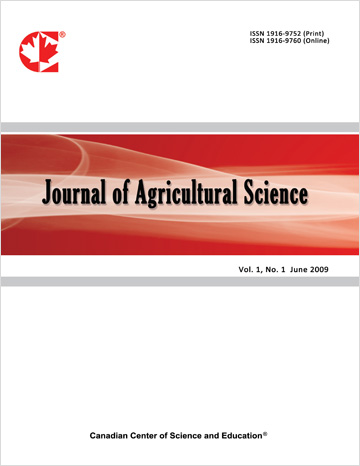Climate Change and Agricultural Production in South Africa: Impacts and Adaptation options
- Phokele Maponya
- Sylvester Mpandeli
Abstract
The primary aim of the paper was to identify the impacts and adaptation options of climate variability and change on agricultural production in Limpopo province. The following objectives were identified: to understand the impacts of climate variability and change on agricultural production in Limpopo province ; to assess the impacts of climate variability and change on agricultural production in Limpopo province and to identify adaptation measures that reduces the impacts of climate variability and change on agricultural production in Limpopo province. A representative sample of 300 farmers aged 16 – 65+ years (46 percent males and 54 percent females) participated in the study. The study involved Sekhukhune and Capricorn districts, with 56 percent farmers in Capricorn and 44 percent in Sekhukhune district. The following 11 local municipalities were visited: Elias Motsoaledi, Makhuduthamaga, Fetakgomo, Ephraim Mogale, Tubatse, Lepelle Nkumpi, Blouberg, Aganang, Polokwane, and Molemole. Statistics was used to determine climate variability and change impact on agricultural production. Results indicate that farmers are aware that Limpopo province is getting warmer and drier with increased frequency of droughts, changes in the timing of rains, observed trends of temperature and precipitation. This paper also confirmed that being full time farmer, gender, information on climate change, information received through extension services and adaptation to climate change are some of the important determinants of agricultural production, food scarcity and unemployment. The paper also presented perceived adaptation strategies of selected Limpopo province farmers. Some of their perceived adaptation strategies included: (a) soil management strategies, (b) water management strategies and (c) others like use of subsidies and use of insurance. Other important adaptation options being used by farmers were also discussed in this paper including different adaptation measures against colds, heat, frost, abnormal wind, hail, lack of extension support, nematodes, insecticides, worms, temperature and rainfall. The results of this paper are potentially valuable to the agricultural sector considering the threates that climate change poses across climate sensitive sectors
- Full Text:
 PDF
PDF
- DOI:10.5539/jas.v4n10p48
Journal Metrics
- h-index: 67
- i10-index: 839
- WJCI (2023): 0.884
- WJCI Impact Factor (2023): 0.196
Index
- AGRICOLA
- AGRIS
- BASE (Bielefeld Academic Search Engine)
- Berkeley Library
- CAB Abstracts
- ChronosHub
- CiteSeerx
- CNKI Scholar
- Copyright Clearance Center
- CrossRef
- DESY Publication Database
- DTU Library
- e-Library
- EBSCOhost
- EconPapers
- Elektronische Zeitschriftenbibliothek (EZB)
- EuroPub Database
- Excellence in Research for Australia (ERA)
- Google Scholar
- Harvard Library
- IDEAS
- iDiscover
- Jisc Library Hub Discover
- JournalTOCs
- KindCongress
- LIVIVO (ZB MED)
- LOCKSS
- Max Planck Institutes
- Mendeley
- MIAR
- Mir@bel
- NLM Catalog PubMed
- Norwegian Centre for Research Data (NSD)
- Open J-Gate
- OUCI
- PKP Open Archives Harvester
- Polska Bibliografia Naukowa
- Qualis/CAPES
- RefSeek
- RePEc
- ROAD
- ScienceOpen
- Scilit
- SCiNiTO
- Semantic Scholar
- SHERPA/RoMEO
- Southwest-German Union Catalogue
- Standard Periodical Directory
- Stanford Libraries
- SUDOC
- Swisscovery
- Technische Informationsbibliothek (TIB)
- Trove
- UCR Library
- Ulrich's
- UniCat
- Universe Digital Library
- WorldCat
- WRLC Catalog
- Zeitschriften Daten Bank (ZDB)
Contact
- Anne BrownEditorial Assistant
- jas@ccsenet.org
